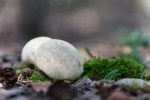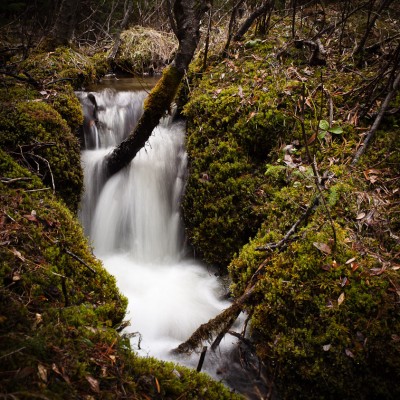 Small boreal waterfall in feathermoss It’s been a busy summer, but I’m slowly starting to work my way through all the photographs that I made during my time in Banff and in the boreal forest of north-western Alberta. This photograph is of one of my favourite things to come across while walking through the forest—a small creek flowing over a little waterfall. You can usually hear them a few steps before you see them and it’s such a peaceful, relaxing sound—birds in the background, cool morning breeze in the tops of the spruce—beautiful.
One of the big challenges of photographing in the boreal is that there is so much detail—understory plants, fallen leaves, twigs, etc. that it is sometimes hard to concentrate the focus of the viewer on the intended subject of the photograph. In this case, I used a fairly heavy vignetting in post-processing to darken the detail from the corners and concentrate the attention to the water and moss. I have a portfolio of boreal photography where I used another, more experimental technique to achieve the same goal. Click here to have a look at that portfolio.
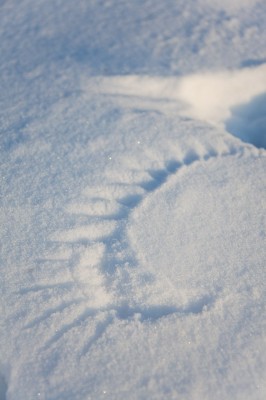 Magpie wingprint After a couple centimeters of fresh, powdery snow, I went for a walk at the Strathcona Science Park along the North Saskatchewan River. In one area there were nearly a dozen spots where a magpie had dropped into the snow, leaving these beautiful impressions of its wing tips and long tail—thrown into beautiful detail by the low angle of the sun these days. I couldn’t tell what it was after under the snow, and I didn’t see any other magpie tracks outside of this one small area. If you have ever seen something similar, I’d love to hear you think this bird might have been up to.
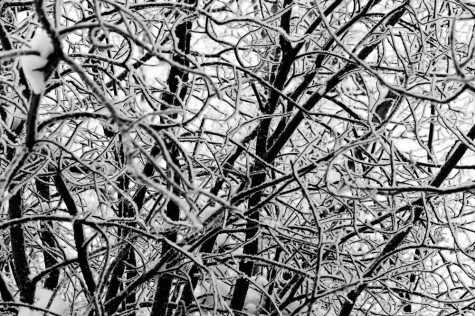 Tangle of winter branches II Here’s another detail-oriented image taken during our recent spell of grey, overcast winter days. As I mentioned in a previous post, when the light is diffused so evenly by the low, bright stratus clouds that are common over central Alberta in the winter (especially the past few weeks), it’s often these close-up, detail oriented compositions that I find work best.
I don’t commonly convert images to black and white, and even less often do I process them quite as heavily as I have here. While the contrast was fairly strong to begin with, I’ve “crushed” the darks all the way down, and bumped the background sky all the way up, to really emphasize the somewhat abstract pattern of the tangled branches, accentuated by the lining of snow and frost. Perhaps I’ll also post the original version as well, and I would love to hear your comments as to which you prefer.
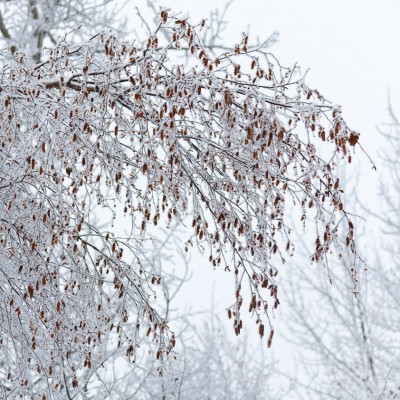 Branches and catkins against a flat winter sky In central Alberta the cold snap is over, and a prolonged case of the “winter-stratus” has set in—stratus clouds, that is. These are low, featureless clouds and in winter, when there isn’t much moisture, they are generally light grey to nearly white. Sometimes, like yesterday afternoon, they’ll lift a little to where you might call them altostratus, and you’re more likely to catch a little break for the sun to peak through. These are probably the most common clouds (stratus and altostratus) over Edmonton during the winter when there’s not enough solar energy to build a decent cumulus cloud. (I think I may be letting the cloud-watcher nerd in me show a little here).
Photographically speaking, stratus clouds make the light perfectly flat and even, which can be both a curse and a blessing. Generally, the contrast of side light and shadows makes for more dramatic images than the flat light under a stratus ceiling, but I find that sometimes detail-oriented compositions benefit from the “huge softbox in the sky” effect. I enjoy the challenge of finding these photographs on days that would normally be considered photographic busts.
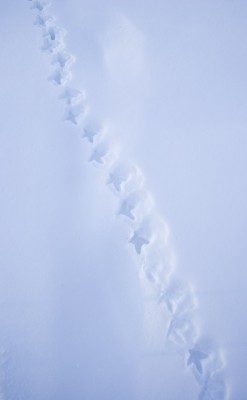 Grouse tracks in fresh snow I was sent a photo recently of an unidentified bird out at Elk Island National Park that turned out to be a Ruffed Grouse. The same day I had been out taking photographs at Ministik Lake Game Bird Sanctuary, which is just south of Elk Island, and had come across a fair number of grouse tracks in the dusting of fresh snow that had fallen overnight (this photo was taken at Ministik, but a couple years ago). The tracks are quite distinctive with the wide snowshoe-like toes, and it’s interesting to see where the birds come and go. Keep an eye out for these next time you’re in the fresh snow.
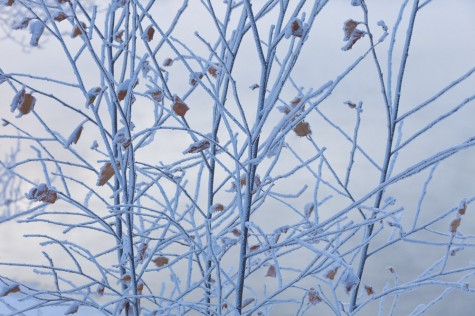 Ice fog frozen on alder saplings Here’s another photo that I took last saturday during our cold snap. On really cold days I like to go make photographs at the Strathcona Science Provincial Park just east of Edmonton. Their is a warm water outflow a little upstream from the park which keeps the river partially open. The mist coming from the river coats the banks, and if the sun is out, the effect can be fantastic—and very chilly looking.
|
(Click photos to enlarge)
|








